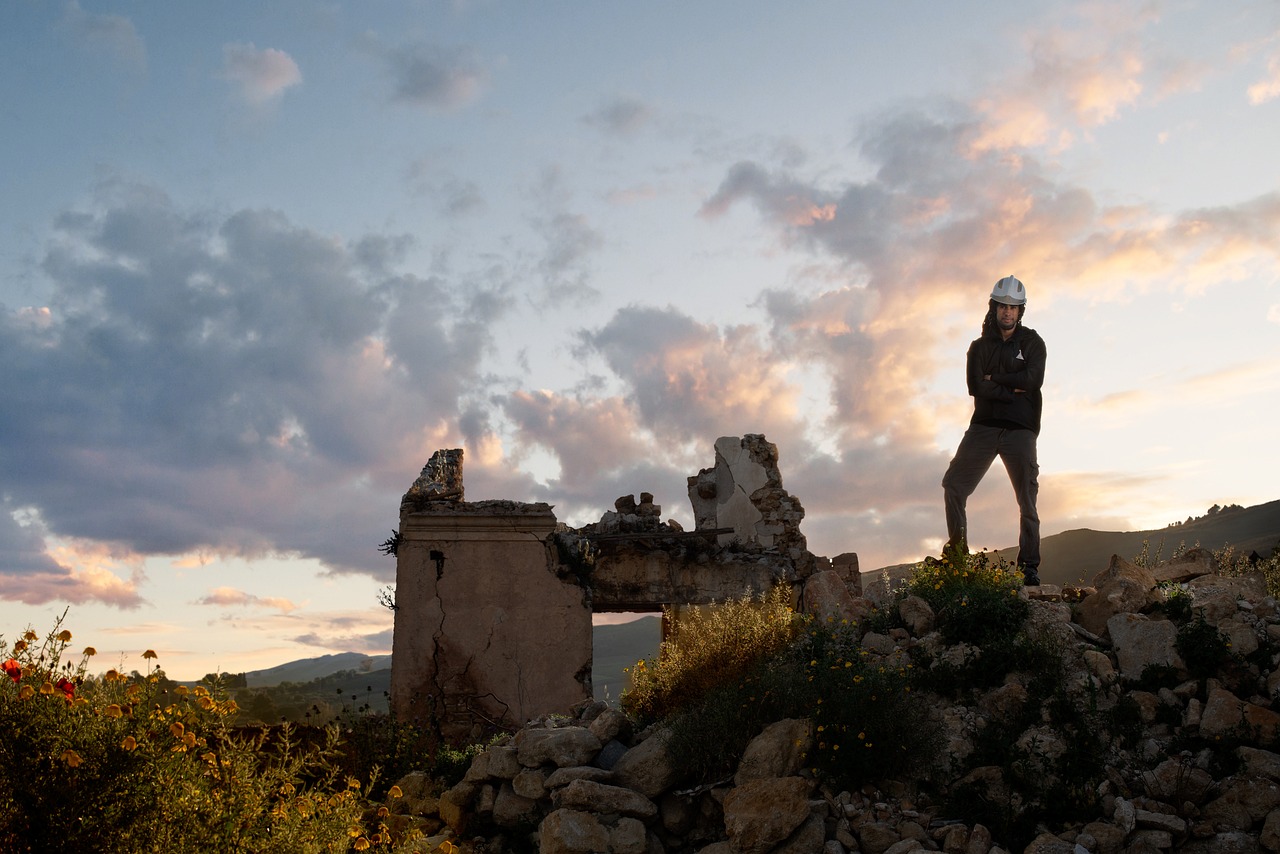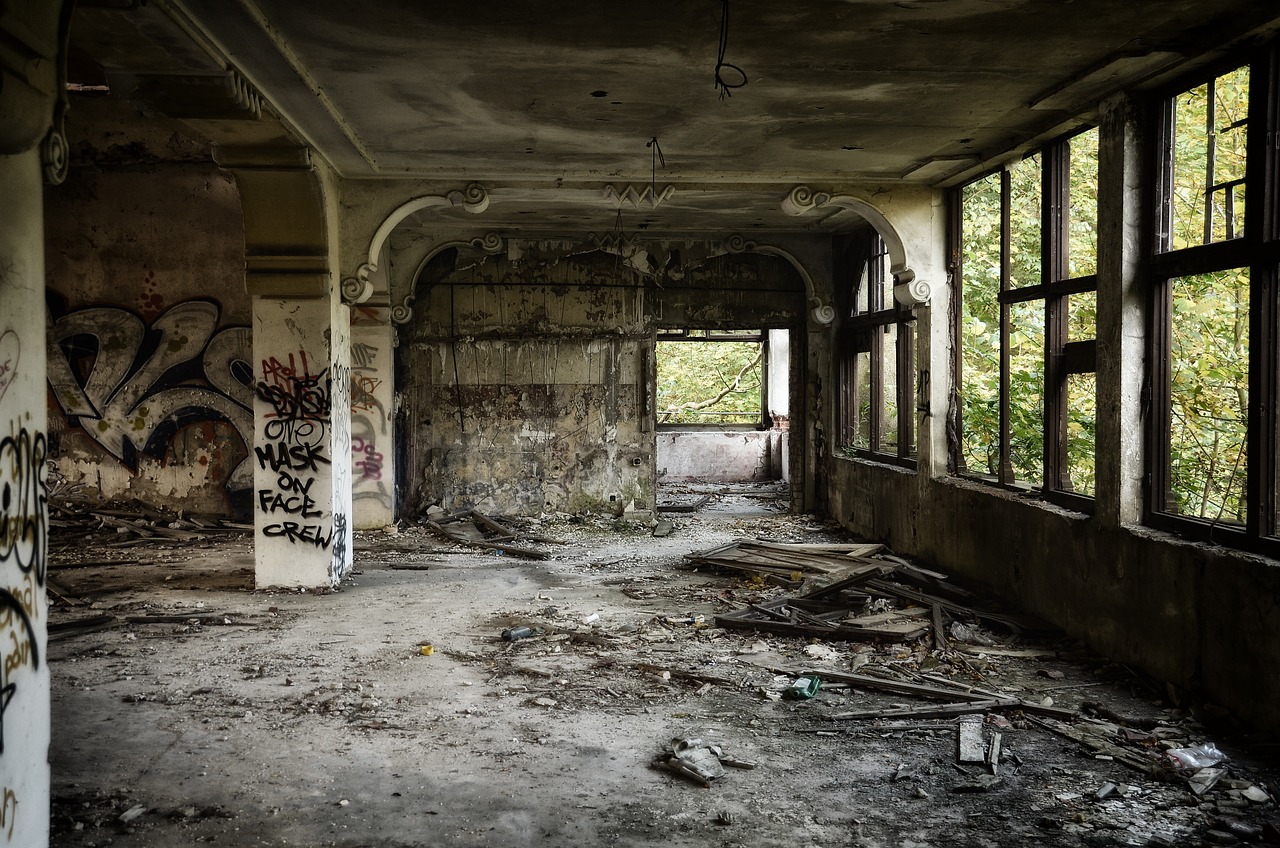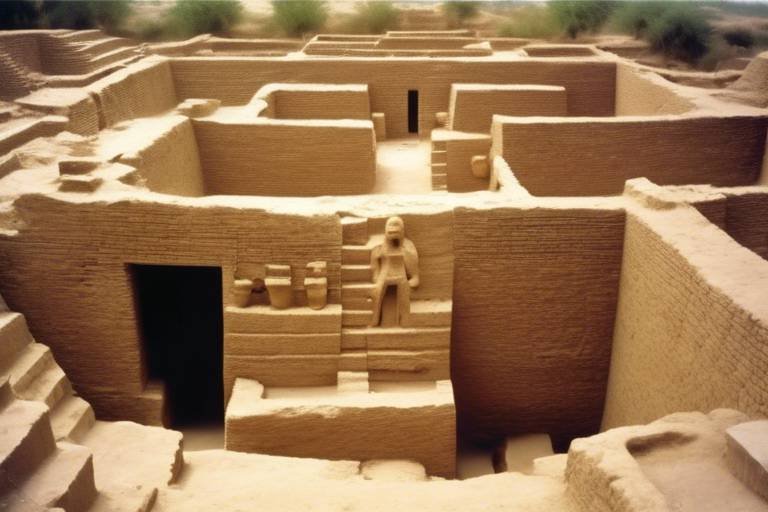Exploring the Secrets of the Mayan Civilization
The ancient Mayan civilization, shrouded in mystery and intrigue, continues to captivate the imagination of historians and archaeologists alike. Known for their remarkable advancements in astronomy, mathematics, and architecture, the Mayans left behind a rich legacy that still puzzles researchers to this day. By delving into the secrets of this enigmatic civilization, we can unravel the intricate tapestry of their culture, beliefs, and astonishing achievements.

Mayan Calendar System
The Mayan civilization is renowned for its remarkable achievements in various fields, including astronomy, mathematics, and architecture. One of the most intriguing aspects of their culture is the intricate Mayan calendar system, which played a vital role in their daily lives and religious ceremonies. This calendar system was not just a tool for tracking time but a complex and accurate method of measuring celestial events and predicting future occurrences.
The Mayan calendar consisted of multiple interlocking cycles, with the Tzolk'in and Haab' being the most well-known. The Tzolk'in, also known as the sacred calendar, comprised 260 days and was used for divination purposes and scheduling religious ceremonies. On the other hand, the Haab' was a solar calendar consisting of 365 days divided into 18 months of 20 days each, with an additional five-day month called the Wayeb'. These calendars worked together to create a more precise and comprehensive system of timekeeping.
What set the Mayan calendar apart was its accuracy in predicting astronomical events such as solstices, equinoxes, and the movements of celestial bodies. The Maya were able to align their religious rituals and agricultural activities with these celestial occurrences, demonstrating their advanced knowledge of astronomy and mathematics. The intricate nature of their calendar system reflects the deep connection the Maya had with the cosmos and the spiritual significance they attributed to the passage of time.

Architectural Marvels
The Mayan civilization is renowned for its extraordinary architectural marvels that continue to captivate and inspire awe to this day. One of the most iconic features of Mayan architecture is the stepped pyramids, such as the famous El Castillo at Chichen Itza. These grand structures, built with precision and ingenuity, served as ceremonial centers and astronomical observatories. The intricate carvings and decorations adorning the pyramids reflect the Mayan's advanced artistic skills and religious beliefs, creating a mesmerizing sight for visitors.
In addition to pyramids, the Maya constructed elaborate temples that were dedicated to various gods and deities. These temples, often adorned with intricate stone carvings and sculptures, served as sacred spaces for religious ceremonies and rituals. The meticulous attention to detail and the use of symbolic motifs in their architecture highlight the spiritual significance that permeated every aspect of Mayan life.
Furthermore, the Maya built sophisticated urban centers characterized by intricate city layouts, expansive plazas, and interconnected buildings. These urban centers, such as Tikal and Palenque, showcase the Maya's urban planning skills and architectural prowess. The intricate network of roads, reservoirs, and agricultural terraces integrated into the city design reflects the Maya's deep understanding of engineering and sustainability.
Mayan architecture also exhibits a harmonious blend of artistry and functionality, with structures designed to withstand the test of time. The use of local materials such as limestone, stucco, and wood, combined with innovative construction techniques, resulted in durable buildings that have endured for centuries. The architectural marvels of the Maya stand as a testament to their ingenuity, creativity, and cultural sophistication.

Religious Beliefs and Rituals
The ancient Maya were deeply entrenched in a complex belief system that shaped every aspect of their lives. Central to their society were their religious beliefs and rituals, which revolved around a pantheon of gods and spirits. The Maya believed that these deities controlled natural forces and were responsible for maintaining order in the world.
One of the most intriguing aspects of Mayan religious practices was their elaborate rituals, many of which involved bloodletting and human sacrifice. These rituals were seen as essential to appease the gods and ensure the well-being of the community. Bloodletting ceremonies, where individuals would pierce their tongues, ears, or genitals with sharp objects, were believed to communicate with the gods and secure their favor.
Moreover, the Mayan ball game, known as pok-a-tok, held significant religious importance. It was not merely a sport but a sacred ritual with symbolic significance. The game represented the eternal struggle between the forces of light and darkness, life and death. The winning team was often seen as embodying the forces of good, while the losers were sometimes sacrificed in honor of the gods.
Additionally, the Maya practiced divination and consulted oracles to seek guidance from the spiritual realm. Shamans played a crucial role in communicating with the spirit world and interpreting signs and omens. The Maya believed that the alignment of celestial bodies, such as the movements of the stars and planets, held profound significance and could influence human affairs.
Overall, the religious beliefs and rituals of the Maya were deeply intertwined with their daily lives, social structure, and worldview. By understanding their complex spiritual practices, we gain insight into the profound connection between the ancient Maya and the supernatural forces they revered.

Trade and Economy
When it comes to the trade and economy of the ancient Mayan civilization, one cannot help but marvel at the extensive networks that connected various regions and facilitated the exchange of valuable goods. The Maya engaged in long-distance trade, transporting commodities such as jade, obsidian, cacao, and textiles across vast distances through a well-established trade network.
This intricate web of trade routes allowed the Maya to acquire resources not naturally available in their own regions, showcasing their economic prowess and adaptability. The exchange of goods was not only for practical purposes but also held significant cultural and symbolic value, strengthening social ties and fostering connections between different communities.
Moreover, the economy of the Maya was not solely based on trade but also encompassed various other aspects such as agriculture, craftsmanship, and tribute systems. Agriculture played a vital role in sustaining their civilization, with advanced farming techniques enabling the cultivation of crops like maize, beans, and squash.
The Maya also excelled in craftsmanship, producing exquisite pottery, textiles, and intricate ornaments that were highly prized commodities in trade. These artistic creations not only served as trade goods but also reflected the cultural sophistication and creativity of the Maya civilization.
Additionally, the Maya implemented tribute systems where conquered territories paid tribute in the form of goods or labor, further enriching the economy and consolidating their power. This system of tribute reinforced social hierarchies and political control, contributing to the economic stability of the Maya society.

Mayan Hieroglyphic Writing
The Mayan hieroglyphic writing system is a fascinating aspect of the ancient civilization's culture, offering insights into their history, beliefs, and daily life. This intricate script combined logograms, which represent whole words or concepts, with syllabic symbols, creating a complex method of recording information.
Imagine the Mayan scribes meticulously inscribing these symbols on various surfaces, from stone monuments to codices, to preserve their knowledge for future generations. Each glyph held meaning, allowing the Maya to document historical events, religious practices, and astronomical observations with remarkable detail.
Deciphering Mayan hieroglyphs has been a challenging yet rewarding endeavor for scholars, leading to a deeper understanding of the civilization's achievements and customs. By studying these glyphs, researchers have unveiled the stories of powerful rulers, intricate calendars, and intricate mythological narratives.
One of the most famous Mayan hieroglyphic texts is the Dresden Codex, a pre-Columbian book containing detailed information on astrology, rituals, and the sacred calendar. This precious manuscript provides a window into the intellectual sophistication of the Maya and their reverence for the celestial realms.
Through the study of Mayan hieroglyphic writing, we can appreciate the intellectual legacy of this ancient civilization and marvel at their ability to convey complex ideas through symbols and imagery. The intricate beauty of their script continues to captivate scholars and enthusiasts alike, offering a glimpse into a world where words were etched in stone and history was written in glyphs.

Decline and Collapse
Investigate the factors that led to the decline and eventual collapse of the Mayan civilization, a once-thriving society that mysteriously faded into obscurity. Scholars have long debated the reasons behind this enigmatic downfall, with various theories pointing to a combination of environmental degradation, internal strife, and external pressures. The once bustling urban centers of the Maya, adorned with intricate temples and bustling marketplaces, fell silent as the civilization faced a series of challenges that ultimately led to its demise.
Environmental degradation played a significant role in the decline of the Mayan civilization. The extensive deforestation and unsustainable agricultural practices of the Maya led to soil erosion, depletion of natural resources, and ultimately, a collapse in agricultural productivity. As the population grew and resources dwindled, the Maya struggled to sustain their society, leading to food shortages and social unrest.
Warfare and political instability also contributed to the collapse of the Maya. Internal conflicts between city-states, power struggles among ruling elites, and invasions from neighboring civilizations all took their toll on the once-unified society. The constant warfare and shifting alliances weakened the Maya, leaving them vulnerable to external threats and internal discord.
Moreover, the abandonment of major urban centers remains a puzzling aspect of the Mayan collapse. Cities such as Tikal and Copan, once thriving hubs of culture and commerce, were mysteriously deserted, leaving behind empty ruins shrouded in mystery. The reasons behind this mass exodus are still a subject of debate among archaeologists, with theories ranging from prolonged droughts to social upheaval.
As the once-mighty Mayan civilization crumbled, leaving behind a legacy of architectural wonders and artistic achievements, the reasons for its decline continue to fascinate and intrigue scholars and enthusiasts alike. By unraveling the mysteries of their decline, we gain a deeper understanding of the complexities of ancient civilizations and the fragility of human societies throughout history.

Mayan Art and Pottery
The Mayan civilization's artistic legacy is a testament to their creativity and skill, evident in their intricate pottery, detailed sculptures, and vibrant murals. Mayan artistry reflects a deep connection to their daily lives, mythology, and religious practices, offering a glimpse into their rich cultural heritage.
Mayan pottery is a remarkable example of their artistic prowess, featuring elaborate designs and symbolic motifs that convey stories and beliefs. The use of vibrant colors and intricate patterns in Mayan pottery showcases their attention to detail and craftsmanship, making each piece a work of art.
In addition to pottery, Mayan sculptures are another significant aspect of their artistic expression. Sculptures depict various figures, including gods, rulers, and mythical creatures, highlighting the Maya's reverence for their deities and the importance of storytelling through art. These sculptures serve as visual narratives of Mayan beliefs and traditions.
Furthermore, Mayan murals offer a glimpse into the daily life and religious practices of the ancient civilization. Elaborate scenes adorning walls in temples and palaces depict rituals, ceremonies, and mythological stories, providing valuable insights into Mayan society and culture. The intricate details and vibrant colors of the murals demonstrate the Maya's artistic sophistication and storytelling abilities.
Symbolism plays a crucial role in Mayan art, with each design and motif holding deeper meaning and significance. From representations of animals and plants to celestial symbols and geometric patterns, every element in Mayan art carries cultural importance and conveys spiritual beliefs. The intricate symbolism in Mayan art adds layers of complexity and depth to their artistic expressions.
Overall, Mayan art and pottery serve as windows into the ancient civilization's worldview, offering a glimpse of their beliefs, customs, and artistic achievements. The intricate craftsmanship, vibrant colors, and rich symbolism found in Mayan art continue to captivate and inspire admiration for the creativity and cultural legacy of this remarkable civilization.

Legacy of the Maya
The legacy of the Maya civilization transcends time, leaving a profound impact on various fields of knowledge and artistic expression. Their contributions in mathematics, astronomy, art, and architecture continue to inspire awe and admiration in the modern world. The Maya's intricate understanding of celestial movements and advanced mathematical concepts, such as the concept of zero, laid the foundation for future developments in these fields.
One of the most significant legacies of the Maya is their architectural marvels, including the iconic stepped pyramids and elaborate temples that stand as a testament to their engineering prowess and artistic sophistication. These structures not only showcase the Maya's mastery of construction but also serve as a window into their religious beliefs and societal organization.
Furthermore, the Maya's artistic expressions through pottery, sculptures, and murals offer a glimpse into their rich cultural heritage and mythological narratives. The intricate designs and symbolic motifs found in their artwork reflect a deep connection to nature, spirituality, and the divine, providing valuable insights into the worldview of this ancient civilization.
Moreover, the Maya's legacy extends to their written language, the intricate hieroglyphic script that has fascinated scholars and enthusiasts alike. Through deciphering these glyphs, researchers have unlocked a wealth of knowledge about Mayan history, religion, and daily life, shedding light on the complexities of their society and intellectual achievements.
Overall, the legacy of the Maya serves as a reminder of the ingenuity and creativity of this ancient civilization, inspiring curiosity and admiration for their achievements across various disciplines. Their cultural heritage continues to captivate the imagination of people around the world, fostering a deeper appreciation for the enduring influence of the Maya civilization.
Frequently Asked Questions
- What is the significance of the Mayan calendar system?
The Mayan calendar system was highly advanced and played a crucial role in their religious ceremonies and daily lives. It consisted of interlocking cycles that tracked time with precision, reflecting the Maya's deep connection to astronomy and cosmology.
- How did the Mayan civilization contribute to mathematics and astronomy?
The Maya made significant contributions to mathematics and astronomy, developing complex numerical systems and accurately predicting celestial events. Their understanding of the movements of celestial bodies is evident in the precision of their calendar system and architectural alignments.
- What led to the decline and collapse of the Mayan civilization?
The decline of the Maya was influenced by a combination of factors including environmental degradation, warfare, political instability, and the abandonment of urban centers. These stressors ultimately contributed to the collapse of their once-great civilization.
- How did the Maya express their religious beliefs through art and pottery?
The Maya expressed their complex religious beliefs through intricate pottery, sculptures, and murals depicting scenes from daily life, mythology, and spiritual ceremonies. These artistic expressions offer insights into the Maya's worldview and cultural practices.
- What is the legacy of the Maya civilization in modern society?
The legacy of the Maya endures through their contributions to mathematics, astronomy, art, and architecture. Their cultural heritage continues to inspire fascination and admiration, shaping modern understandings of ancient civilizations and influencing contemporary art and architecture.



















